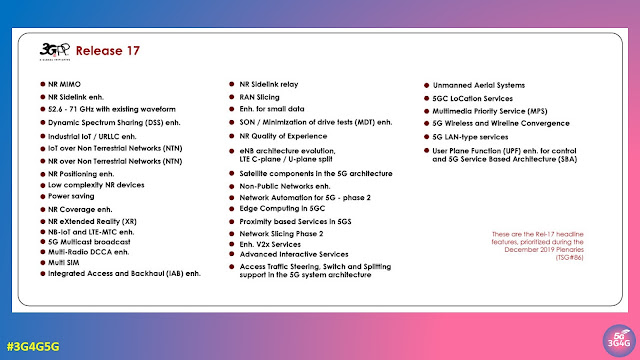Private 5G networks have immense potential to transform industries by improving flexibility within the shop floor of the industries. Industrial 5G networks hold the promise to transform mission-critical industrial automation by using the built-in 5G features of higher bandwidth, lower latency, greater reliability, and improved security.
Some of the ways in which Industrial 5G (I5G) networks will help transform mission-critical industrial networks using automation include:
- Enhanced Communication: I5G networks will offer faster and more reliable communication between machines, sensors, and other devices. This will lead to better synchronization, increased efficiency, and reduced downtime in industrial processes.
- High-Quality Video: I5G networks will provide high-quality video streaming, enabling real-time monitoring of industrial processes. This will be particularly useful in applications such as remote inspections, quality control, and process optimization.
- Edge Computing: I5G networks will support edge computing, that will enable processing of data close to where it is generated. This will help to keep latency to a minimum thereby improve response times and making it possible to perform critical tasks in real-time.
- Improved Security: I5G networks will provide improved security features along with network slicing, which will enable the creation of secure virtual networks for specific applications or users. This will in-turn help to protect against cyberattacks and ensure the integrity of data.
- Reduced Downtime: I5G networks will help to reduce downtime by providing real-time monitoring and predictive maintenance capabilities. This will allow identification of potential problems before they cause downtime thereby enabling proactive maintenance and repairs.
Overall, I5G networks have the potential and the capability to significantly improve mission-critical industrial automation by providing faster, more reliable, and secure communication, enabling real-time monitoring and control, and reducing downtime through predictive maintenance capabilities.
In addition, Private/Industrial 5G will help with Time-Sensitive Networking (TSN) by providing a highly reliable and low-latency wireless communication network that can support real-time industrial control and automation applications. TSN is a set of IEEE standards that enable time-critical data to be transmitted over Ethernet networks with very low latency and high reliability.
I5G networks provide a wireless alternative to wired Ethernet networks for TSN applications, which can be advantageous in environments where deploying Ethernet cabling is difficult or costly. With I5G, TSN traffic can be prioritized and transmitted over the network with low latency and high reliability, which is critical for industrial automation and control applications that require precise timing and synchronization.
Moreover, I5G networks can be deployed with network slicing capabilities, allowing for the creation of multiple virtual networks with different performance characteristics tailored to specific applications or user groups. This means that TSN traffic can be isolated and prioritized over other types of traffic, ensuring that critical data is always transmitted with the highest priority and reliability.
Last year, Qualcomm hosted a webinar on 'Realizing mission-critical industrial automation with 5G'. The webinar is embedded below:
Here is the summary of what the webinar includes:
Manufacturers seeking better operational efficiencies, with reduced downtime and higher yield, are at the leading edge of the Industry 4.0 transformation. With mobile system components and reliable wireless connectivity between them, flexible manufacturing systems can be reconfigured quickly for new tasks, to troubleshoot issues, or in response to shifts in supply and demand.
5G connectivity enables flexibility in demanding industrial environments with key capabilities such as ultra-reliable wireless connectivity, wireless Ethernet, time-sensitive networking (TSN), and positioning. There is a long history of R&D collaboration between Bosch Rexroth and Qualcomm Technologies for the effective application of these 5G capabilities to industrial automation use cases. At the Robert Bosch Elektronik GmbH factory in Salzgitter, Germany, this collaboration has reached new heights by demonstrating time-synchronized control of an industrial robot, and remote positioning of an automated guided vehicle (AGV) over a live, ultra-reliable 5G private network.
Watch the session to learn how:
- Qualcomm Technologies and Bosch Rexroth are collaborating to accelerate the Industry 4.0 transformation
- 5G technologies deliver key capabilities for mission-critical industrial automation
- Distributed control solutions can work effectively across 5G TSN networks
- A single 5G technology platform solves connectivity and positioning needs for flexible manufacturing
The video is also available on Qualcomm site here and the slides are here.
A shorter video looking behind the tech to see how Qualcomm and Bosch are partnering to enable mission-critical industrial automation over a 5G private network is as follows:
Related Posts:
- The 3G4G Blog: 5G and Industry 4.0
- The 3G4G Blog: 3GPP Release-17 5G NR Reaches Completion
- The 3G4G Blog: What Is the Role of AI and ML in the Open RAN and 5G Future?
- The 3G4G Blog: 3GPP Release-18 Work Moves Into Focus as Release-17 Reaches Maturity
- The 3G4G Blog: '5G RAN Release 18 for Industry Verticals' Webinar Highlights
- The 3G4G Blog: Challenges and Future Perspectives of Industrial 5G
- Free 6G Training: Qualcomm Pushing the boundaries of AI research



















